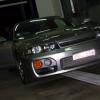Need help regarding Compliance thingy
Announcements
-
Similar Content
-
Latest Posts
-
By Dose Pipe Sutututu · Posted
Ain't that the truth. I tried to save money, got my 1st motor built by a small "Facebook accredited" workshop, motor blew up in 2x track days. 2nd motor, took it to Birrong Automotive and it's seen 6 solid track days and not a single issue, except frying the clutch. -
Poor man pays twice. That’s how this works.
-
I'm glad someone else already raised the sunken cost fallacy. No point spending more money on shit that won't work properly, when you can scrap those parts and start again, and likely not cost much more than making the shit you've got work.






Recommended Posts
Create an account or sign in to comment
You need to be a member in order to leave a comment
Create an account
Sign up for a new account in our community. It's easy!
Register a new accountSign in
Already have an account? Sign in here.
Sign In Now